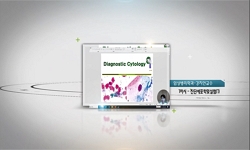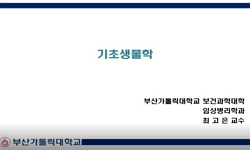Purpose: Difficulty exists in interpreting the significance of atypical urine cytology. This study was performed to assess the diagnostic utility of nuclear matrix protein-22 (NMP-22) testing when atypical cells are detected during urine cytology. Mat...
http://chineseinput.net/에서 pinyin(병음)방식으로 중국어를 변환할 수 있습니다.
변환된 중국어를 복사하여 사용하시면 됩니다.
- 中文 을 입력하시려면 zhongwen을 입력하시고 space를누르시면됩니다.
- 北京 을 입력하시려면 beijing을 입력하시고 space를 누르시면 됩니다.
https://www.riss.kr/link?id=A104590550
- 저자
- 발행기관
- 학술지명
- 권호사항
-
발행연도
2011
-
작성언어
English
- 주제어
-
등재정보
KCI등재,SCOPUS,SCIE
-
자료형태
학술저널
-
수록면
603-606(4쪽)
-
KCI 피인용횟수
0
- 제공처
-
0
상세조회 -
0
다운로드
부가정보
다국어 초록 (Multilingual Abstract)
Purpose: Difficulty exists in interpreting the significance of atypical urine cytology. This study was performed to assess the diagnostic utility of nuclear matrix protein-22 (NMP-22) testing when atypical cells are detected during urine cytology.
Materials and Methods: Among patients whose urine cytology was reported as atypical between January 2004 and December 2009, a total of 275 who also underwent NMP-22 testing were enrolled in the present study. These patients were further divided into the screening group (143 patients examined as outpatients for hematuria) and the follow-up group (132 patients followed up for previously diagnosed bladder cancer). The sensitivity, specificity, positive and negative predictive values, and accuracy were assessed for atypical cytology alone and in conjunction with NMP-22.
Results: Of the 275 patients exhibiting atypical urine cytology, cancer was confirmed in 85, yielding a positive predictive value of 30.9% (85/275). Of the 96 patients testing positive for NMP-22, 58 were diagnosed with bladder cancer. The positive predictive value in conjunction with NMP-22 was 60.4% (58/96). The sensitivity, specificity, negative predictive value, and accuracy were 68.2% (58/85), 80.0% (152/190), 84.9% (152/179), and 76.2% (210/275), respectively. Testing for NMP-22 in the screening and follow-up groups increased the positive predictive value from 30.0% (43/143) to 64.0% (32/50) and from 31.3% (42/132) to 56.5% (26/46), respectively; there was no significant difference between the screening and follow-up groups (p=0.106).
Conclusions: When only cases with atypical urine cytology were examined, NMP-22 testing increased the detection rate of bladder cancer regardless of whether the test was used in screening hematuria or in following up patients.
다국어 초록 (Multilingual Abstract)
Purpose: Difficulty exists in interpreting the significance of atypical urine cytology. This study was performed to assess the diagnostic utility of nuclear matrix protein-22 (NMP-22) testing when atypical cells are detected during urine cytology. Ma...
Purpose: Difficulty exists in interpreting the significance of atypical urine cytology. This study was performed to assess the diagnostic utility of nuclear matrix protein-22 (NMP-22) testing when atypical cells are detected during urine cytology.
Materials and Methods: Among patients whose urine cytology was reported as atypical between January 2004 and December 2009, a total of 275 who also underwent NMP-22 testing were enrolled in the present study. These patients were further divided into the screening group (143 patients examined as outpatients for hematuria) and the follow-up group (132 patients followed up for previously diagnosed bladder cancer). The sensitivity, specificity, positive and negative predictive values, and accuracy were assessed for atypical cytology alone and in conjunction with NMP-22.
Results: Of the 275 patients exhibiting atypical urine cytology, cancer was confirmed in 85, yielding a positive predictive value of 30.9% (85/275). Of the 96 patients testing positive for NMP-22, 58 were diagnosed with bladder cancer. The positive predictive value in conjunction with NMP-22 was 60.4% (58/96). The sensitivity, specificity, negative predictive value, and accuracy were 68.2% (58/85), 80.0% (152/190), 84.9% (152/179), and 76.2% (210/275), respectively. Testing for NMP-22 in the screening and follow-up groups increased the positive predictive value from 30.0% (43/143) to 64.0% (32/50) and from 31.3% (42/132) to 56.5% (26/46), respectively; there was no significant difference between the screening and follow-up groups (p=0.106).
Conclusions: When only cases with atypical urine cytology were examined, NMP-22 testing increased the detection rate of bladder cancer regardless of whether the test was used in screening hematuria or in following up patients.
참고문헌 (Reference)
1 Feifer AH, "Utility of urine cytology in the workup of asymptomatic microscopic hematuria in low-risk patients" 75 : 1278-1282, 2010
2 최화섭, "Usefulness of the NMP22BladderChek Test for Screening and Follow-up of Bladder Cancer" 대한비뇨기과학회 51 (51): 88-93, 2010
3 Brown FM, "Urine cytology. It is still the gold standard for screening" 27 : 25-37, 2000
4 Jo MK, "The significance of atypical cell in urinary cytology" 39 : 9-14, 1998
5 Raina R, "The clinical utility of atypical cytology is significantly increased in both screening and monitoring for bladder cancer when indexed with nuclear matrix protein-22" 102 : 297-300, 2008
6 Ponsky LE, "Screening and monitoring for bladder cancer: refining the use of NMP22" 166 : 75-78, 2001
7 Farrow GM, "Pathologist’s role in bladder cancer" 6 : 198-206, 1979
8 Farrow GM, "Pathologist’s role in bladder cancer" 6 : 198-206, 1979
9 Gupta NP, "Nuclear matrix protein 22 as adjunct to urine cytology and cystoscopy in follow-up of superficial TCC of urinary bladder" 73 : 592-596, 2009
10 Karakiewicz PI, "Institutional variability in the accuracy of urinary cytology for predicting recurrence of transitional cell carcinoma of the bladder" 97 : 997-1001, 2006
1 Feifer AH, "Utility of urine cytology in the workup of asymptomatic microscopic hematuria in low-risk patients" 75 : 1278-1282, 2010
2 최화섭, "Usefulness of the NMP22BladderChek Test for Screening and Follow-up of Bladder Cancer" 대한비뇨기과학회 51 (51): 88-93, 2010
3 Brown FM, "Urine cytology. It is still the gold standard for screening" 27 : 25-37, 2000
4 Jo MK, "The significance of atypical cell in urinary cytology" 39 : 9-14, 1998
5 Raina R, "The clinical utility of atypical cytology is significantly increased in both screening and monitoring for bladder cancer when indexed with nuclear matrix protein-22" 102 : 297-300, 2008
6 Ponsky LE, "Screening and monitoring for bladder cancer: refining the use of NMP22" 166 : 75-78, 2001
7 Farrow GM, "Pathologist’s role in bladder cancer" 6 : 198-206, 1979
8 Farrow GM, "Pathologist’s role in bladder cancer" 6 : 198-206, 1979
9 Gupta NP, "Nuclear matrix protein 22 as adjunct to urine cytology and cystoscopy in follow-up of superficial TCC of urinary bladder" 73 : 592-596, 2009
10 Karakiewicz PI, "Institutional variability in the accuracy of urinary cytology for predicting recurrence of transitional cell carcinoma of the bladder" 97 : 997-1001, 2006
11 Nabi G, "How important is urinary cytology in the diagnosis of urological malignancies" 43 : 632-636, 2003
12 Sharma S, "Exclusion criteria enhance the specificity and positive predictive value of NMP22 and BTA stat" 162 : 53-57, 1999
13 Melamed MR, "Developments in cytological diagnosis of cancer" 50 : 651-666, 1966
14 Melamed MR, "Developments in cytological diagnosis of cancer" 50 : 651-666, 1966
15 Kapila K, "Could nuclear matrix 22(NMP22) play a role with urine cytology in screening for bladder cancer? – experience at Kuwait University" 19 : 369-374, 2008
16 Miyanaga N, "Clinical evaluation of nuclear matrix protein 22 (NMP22) in urine as a novel marker for urothelial cancer" 31 : 163-168, 1997
17 Deshpande V, "Analysis of atypical urine cytology in a tertiary care center" 105 : 468-475, 2005
18 Khadra MH, "A prospective analysis of 1,930 patients with hematuria to evaluate current diagnostic practice" 163 : 524-527, 2000
동일학술지(권/호) 다른 논문
-
Fungal Urinary Tract Infection in Burn Patients with Long-Term Foley Catheterization
- 대한비뇨의학회
- 김진섭
- 2011
- KCI등재,SCOPUS,SCIE
-
- 대한비뇨의학회
- Polat Dursun
- 2011
- KCI등재,SCOPUS,SCIE
-
Differences in Urinary Stone Composition according to Body Habitus
- 대한비뇨의학회
- 정지윤
- 2011
- KCI등재,SCOPUS,SCIE
-
Large Oncocytic Adrenocortical Tumor with Uncertain Malignant Potential
- 대한비뇨의학회
- 이창기
- 2011
- KCI등재,SCOPUS,SCIE
분석정보
인용정보 인용지수 설명보기
학술지 이력
| 연월일 | 이력구분 | 이력상세 | 등재구분 |
|---|---|---|---|
| 2023 | 평가예정 | 해외DB학술지평가 신청대상 (해외등재 학술지 평가) | |
| 2020-01-01 | 평가 | 등재학술지 유지 (해외등재 학술지 평가) |  |
| 2019-03-12 | 학회명변경 | 한글명 : 대한비뇨기과학회 -> 대한비뇨의학회 |  |
| 2016-03-04 | 학술지명변경 | 외국어명 : 미등록 -> Investigative and Clinical Urology |  |
| 2016-01-15 | 학술지명변경 | 한글명 : Korean Journal of Urology -> Investigative and Clinical Urology |  |
| 2011-01-01 | 평가 | 등재학술지 유지 (등재유지) |  |
| 2009-02-21 | 학술지명변경 | 한글명 : 대한비뇨기과학회지 -> Korean Journal of Urology외국어명 : The Korean Journal of Urology -> 미등록 |  |
| 2009-01-01 | 평가 | 등재학술지 유지 (등재유지) |  |
| 2007-01-01 | 평가 | 등재학술지 유지 (등재유지) |  |
| 2005-01-01 | 평가 | 등재학술지 유지 (등재유지) |  |
| 2002-01-01 | 평가 | 등재학술지 선정 (등재후보2차) |  |
| 1999-07-01 | 평가 | 등재후보학술지 선정 (신규평가) |  |
학술지 인용정보
| 기준연도 | WOS-KCI 통합IF(2년) | KCIF(2년) | KCIF(3년) |
|---|---|---|---|
| 2016 | 0.14 | 0.14 | 0.13 |
| KCIF(4년) | KCIF(5년) | 중심성지수(3년) | 즉시성지수 |
| 0.13 | 0.12 | 0.314 | 0.23 |






 KCI
KCI




